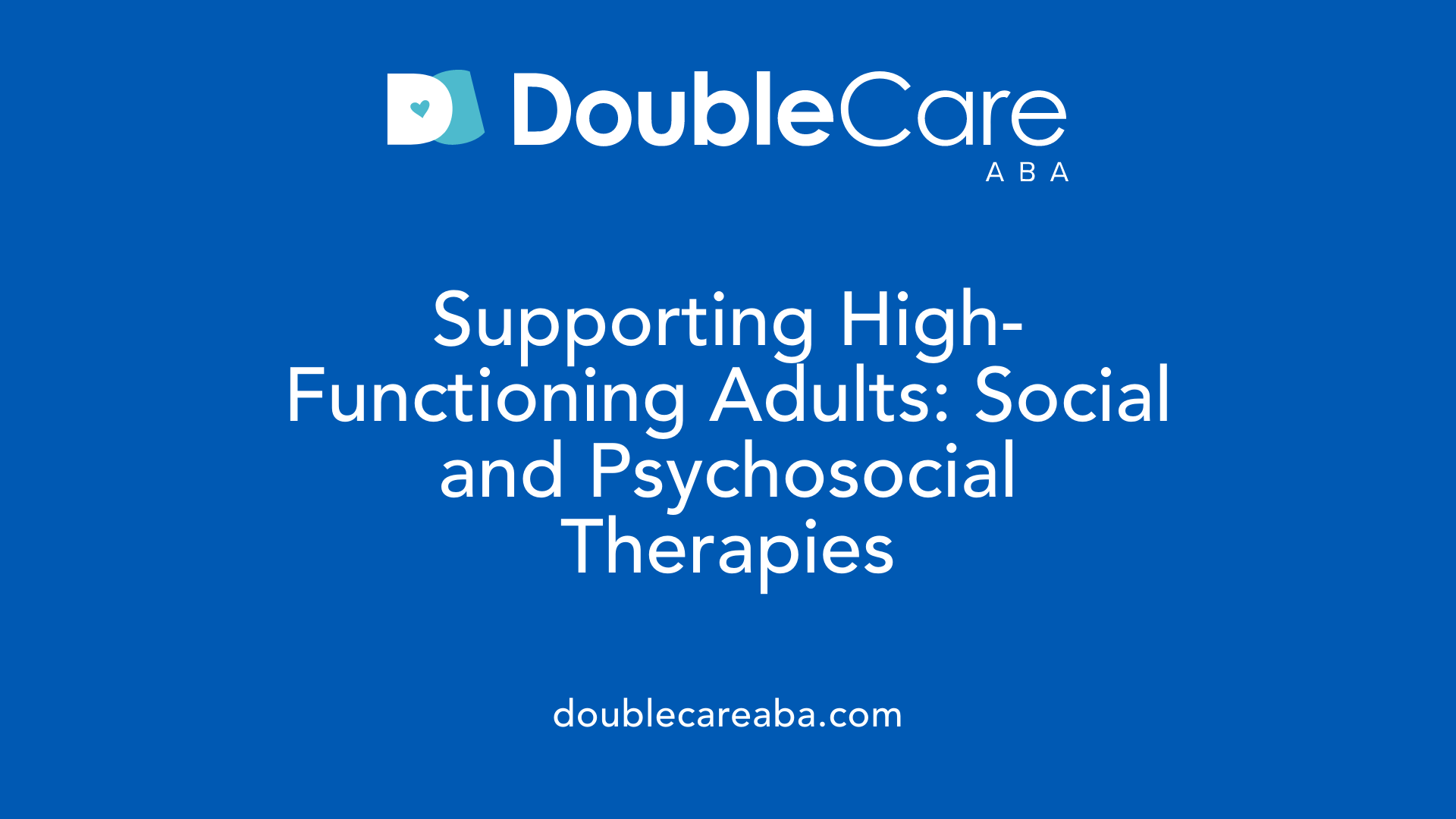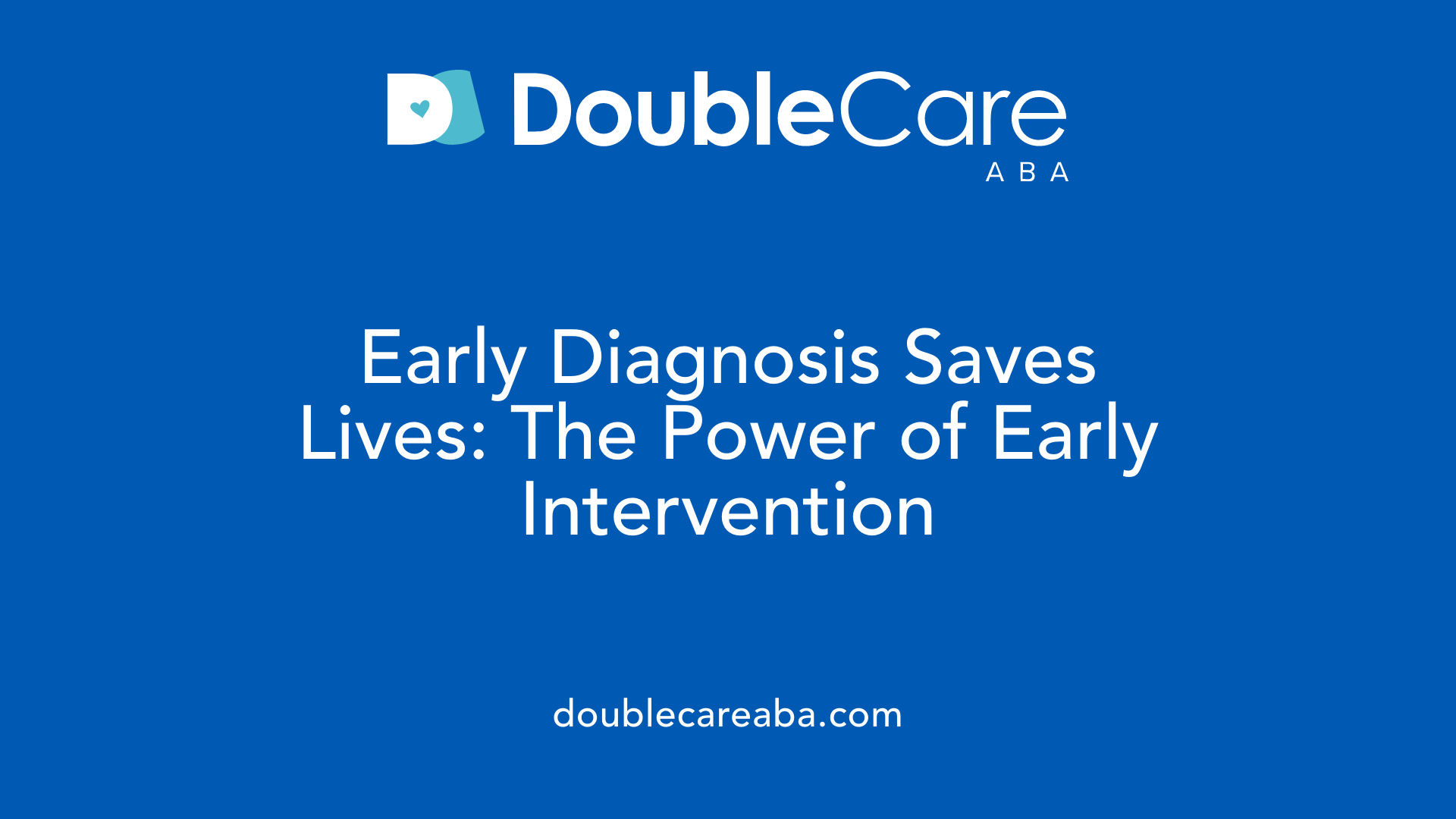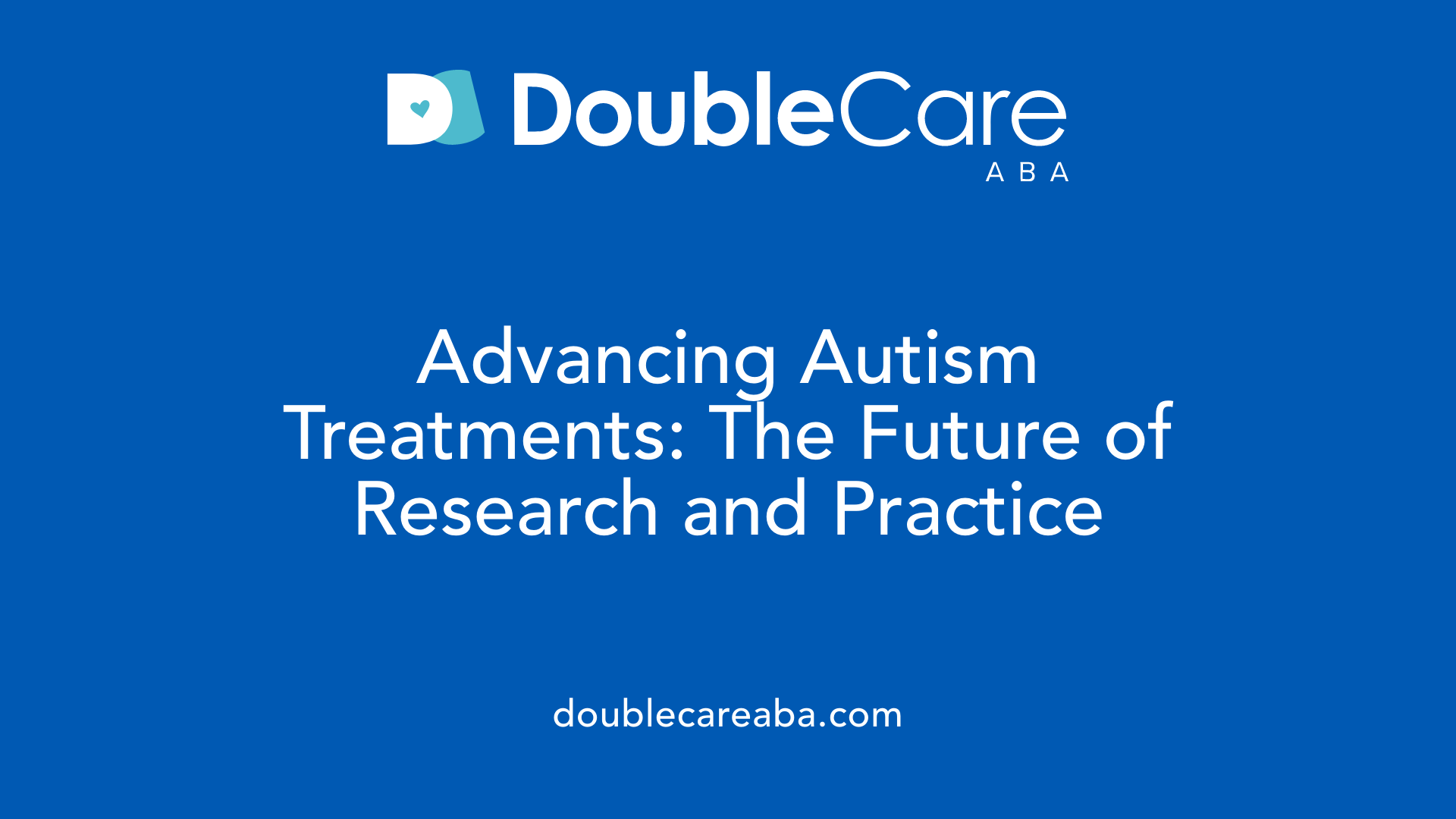Understanding High-Functioning Autism and Therapeutic Foundations
High-Functioning Autism (HFA) represents a unique profile within the autism spectrum characterized by average to above-average intellectual abilities alongside challenges in social communication and behavior. Effective interventions tailored to this group focus on leveraging strengths while addressing specific difficulties to enhance independent living and social integration. This article explores a spectrum of evidence-based therapies, with an emphasis on Applied Behavior Analysis (ABA), cognitive-behavioral therapy (CBT), and other complementary approaches that contribute to meaningful progress for individuals with HFA.
Applied Behavior Analysis (ABA): A Cornerstone Therapy for Autism
What is Applied Behavior Analysis (ABA) therapy for autism?
Applied Behavior Analysis (ABA) therapy is a scientifically supported method aimed at helping individuals with autism spectrum disorder (ASD) improve essential skills and reduce challenging behaviors. Rooted in behavioral psychology, ABA focuses on understanding the relationships between antecedents, behaviors, and consequences to guide learning and behavior change.
How does ABA work and what are its goals?
The therapy's primary goal is to increase useful behaviors — such as language, social interaction, self-care, and academic skills — while decreasing behaviors that may be harmful or impede learning. This is achieved mainly through positive reinforcement, where desired behaviors are encouraged by rewarding the individual immediately after the behavior occurs. ABA programs use techniques like prompting, task analysis, and continuous data collection to track progress and tailor interventions.
What is the historical and scientific basis of ABA?
Developed since the 1960s, ABA has a long history of research and clinical application. It is an evidence-based treatment endorsed by respected authorities including the US Surgeon General and the American Psychological Association. Its scientific validation comes from decades of rigorous studies demonstrating improvements in communication, social skills, and cognitive abilities among children with autism.
How are ABA programs individualized?
ABA treatments are highly flexible and personalized to meet each person's unique needs and interests. A certified behavior analyst (BCBA) conducts an assessment to identify target behaviors and skills, then designs a customized plan emphasizing independence in communication, social engagement, play, self-care, and other areas. ABA can be delivered in various settings such as home, school, or community, with ongoing adjustments informed by detailed data collection. Parents and caregivers often receive training to support learning in everyday environments, enhancing treatment effectiveness.
| Aspect | Description | Additional Details |
|---|---|---|
| Definition | A behavioral therapy based on learning principles to increase positive and reduce negative behaviors | Uses data-driven methods including positive reinforcement |
| Goals | Improve communication, social, self-care, academic, and motor skills while reducing problem behaviors | Focus on independence and functional skills |
| Scientific Foundation | Established since 1960s with strong evidence and endorsements from health authorities | Supported by clinical trials and ongoing research |
| Individualization | Customized programs tailored by BCBAs for each individual's needs and delivered in multiple settings | Includes parent/caregiver involvement and continuous monitoring |
Who Provides ABA Therapy? Professionals Behind the Progress

Who provides ABA therapy for individuals with autism?
ABA therapy is delivered by a range of trained professionals committed to supporting individuals with autism spectrum disorder (ASD). At the core are Board Certified Behavior Analysts (BCBAs), highly qualified experts who develop customized intervention plans, conduct detailed behavioral assessments, and oversee therapy sessions to ensure effective, evidence-based practices.
ABA therapists, sometimes called behavioral health technicians or ABA technicians, work directly with clients to implement these plans. Their duties include delivering structured teaching, reinforcing positive behaviors, collecting and recording data on progress, and maintaining consistent communication with families and caregivers.
ABA therapy providers and their qualifications
Professionals in ABA therapy typically hold relevant educational credentials, ranging from associate degrees for therapists to master's degrees for BCBAs. Certification by the Behavior Analyst Certification Board is essential for BCBAs and desirable for therapists to demonstrate knowledge and skills in applied behavior analysis.
Role of Board Certified Behavior Analysts (BCBAs)
BCBAs are responsible for the overall management of ABA programs. They conduct initial and ongoing assessments, set measurable goals, design individualized treatment plans, and modify approaches based on collected data. Additionally, they provide supervision and training for ABA therapists and serve as the main point of contact for families and other service providers.
ABA therapists and staff responsibilities
ABA therapists carry out daily intervention activities, such as discrete trial training or naturalistic teaching, tailored to the individual's needs. They monitor behavior changes, apply positive reinforcement strategies, and track skill acquisition. Their role is critical in ensuring consistency and generalization of skills across environments.
Settings where ABA is delivered
ABA therapy is flexible and can be provided in multiple settings to maximize effectiveness. Common locations include the individual's home, schools, clinics, and community environments. This adaptability allows for practicing skills in natural contexts, supporting better learning and independence.
Together, this multidisciplinary team plays a pivotal role in the positive development and well-being of those with autism through structured, compassionate, and research-backed ABA therapy.
Mechanisms of Behavior Change: How ABA Therapy Helps Individuals with Autism
Behavior Analysis and Behavior Modification
Applied Behavior Analysis (ABA) therapy is rooted in analyzing the interactions between an individual's environment and their behavior. Therapists carefully study antecedents (events happening before a behavior), the behavior itself, and consequences (events following the behavior). This ABC framework helps tailor interventions that teach or modify behaviors effectively. ABA aims to increase helpful actions and decrease behaviors that may be confusing or harmful.
Positive Reinforcement and Its Role
Central to ABA is the use of positive reinforcement. When a behavior is followed by a reward or valued outcome, that behavior becomes more likely to happen again. By encouraging repeated success through rewarding desired behaviors, ABA fosters learning and skill development across communication, social skills, attention, and self-care.
Use of Antecedents, Behavior, and Consequences in Therapy
By understanding what triggers a behavior (antecedents) and what maintains it (consequences), ABA programs teach individuals strategies to replace problem behaviors with functional alternatives. This approach enhances independence and supports success in daily activities.
Common ABA Techniques: Discrete Trial Training (DTT) and Pivotal Response Training (PRT)
ABA includes a variety of teaching methods. Discrete Trial Training (DTT) is a structured technique that breaks skills into small, manageable steps, delivering clear instructions and offering prompts and rewards. Meanwhile, Pivotal Response Training (PRT) occurs in natural settings and focuses on core skills like initiating communication and motivation, making learning more engaging and functional.
Generalization and Parental Involvement
ABA programs are individualized, emphasizing skills that promote independence in many settings such as home, school, and community. Parents and caregivers receive training to practice skills consistently in everyday situations, helping generalize learning beyond therapy sessions. This involvement is vital for sustaining long-term progress and adapting skills to real-life challenges.
ABA therapy, with its strong empirical support, flexible applications, and collaborative approach, empowers individuals with autism to improve behavior and achieve greater quality of life.
Diverse ABA Teaching Styles: From Discrete Trial Training to Pivotal Response Training
What is Discrete Trial Training (DTT)?
Discrete Trial Training is a highly structured ABA teaching method that breaks down skills into small, manageable steps. Each step involves clear, concise instructions followed by a prompt if necessary and a reward upon correct response. This repetitive, step-by-step process leverages positive reinforcement to teach new behaviors effectively. Due to its structured nature, DTT is typically conducted in controlled environments, where distractions are minimized to facilitate learning.
How Does Pivotal Response Training (PRT) Differ?
Pivotal Response Training represents a naturalistic, play-based ABA approach. Unlike DTT, PRT takes place in natural settings such as home or community environments. It focuses on pivotal areas of learning that are critical for overall development—especially motivation, self-initiation, and communication. This method encourages the child to take an active role in their learning by responding to their interests and choices, thus promoting generalization of skills across real-life situations.
Structural Differences Between DTT and PRT
DTT is characterized by its highly structured, instructor-led format with specific goals and reinforcements planned in advance. In contrast, PRT is more flexible and child-centered, integrating learning opportunities into everyday interactions without rigid trial formats. Whereas DTT relies on repetition and controlled cues, PRT encourages spontaneity and natural social exchanges as part of the learning process.
What Are the Focus Areas in PRT?
Pivotal Response Training targets pivotal skills like initiating communication and motivation. These areas are foundational because improvements here lead to widespread gains in other areas, such as social skills and attention. By enhancing motivation, PRT makes learning more engaging and increases the likelihood that skills will be maintained and generalized across contexts.
| ABA Teaching Style | Structure | Setting | Focus Areas | Reinforcement Style |
|---|---|---|---|---|
| Discrete Trial Training (DTT) | Highly structured, stepwise | Controlled, clinical | Specific discrete skills | Planned rewards after correct responses |
| Pivotal Response Training (PRT) | Flexible, child choice-driven | Naturalistic (home, community) | Pivotal skills like communication, motivation | Natural and child-selected rewards |
Developmental and Educational Approaches Complementing ABA
What is the Early Start Denver Model (ESDM)?
The Early Start Denver Model (ESDM) is a developmental approach designed for children aged 12 to 48 months. It integrates the scientific principles of Applied Behavior Analysis (ABA) with play-based, natural interactions to nurture language, social skills, and cognitive development. ESDM emphasizes parent involvement and makes learning fun, which has been shown to enhance engagement and outcomes. This model helps children acquire crucial social and communication skills during early, critical developmental stages.
How does speech and language therapy support individuals with ASD?
Speech and language therapy focuses on improving both understanding and use of language, which are commonly affected in individuals with Autism Spectrum Disorder (ASD). Conducted by licensed speech-language pathologists, this therapy often incorporates natural settings and communication aids such as gestures or picture-based systems. It is particularly beneficial for children with limited verbal abilities, providing alternative methods to express needs and interact with others.
What role does occupational therapy play in ASD treatment?
Occupational therapy (OT) aims to increase independence by enhancing everyday life skills such as dressing, eating, bathing, and writing. Tailored to individual sensory and motor needs, OT often includes sensory integration therapy, which helps individuals better process and respond to sensory stimuli. This approach supports smoother daily functioning and improves participation in social and academic activities.
How do educational programs like TEACCH assist learning?
TEACCH (Treatment and Education of Autistic and Related Communication-Handicapped Children) is an educational treatment focusing on visual learning and structured consistency within classroom environments. It uses visual routines, schedules, and physical boundaries to help children with ASD understand expectations and manage their tasks. This predictable setting enhances learning outcomes by reducing anxiety and promoting independent functioning.
These developmental and educational therapies provide valuable support that complements ABA by targeting diverse needs ranging from communication skills to sensory processing and structured learning environments. Integrating these approaches can lead to more comprehensive care for individuals with Autism Spectrum Disorder.
Social-Relational and Psychosocial Therapies for High-Functioning Autism Adults

What is Cognitive Behavioral Therapy (CBT) for autism?
CBT is a psychological approach tailored for individuals with autism that focuses on the relationship between thoughts, feelings, and behaviors. It is particularly valuable for addressing mental health issues such as anxiety and depression common in high-functioning autistic adults. The therapy’s structured format includes clear goals, ASD-specific information, and home assignments that help individuals generalize skills across various situations.
How do social skills training programs like PEERS YA help?
Social skills training programs such as PEERS YA use CBT principles to significantly improve social skills, social cognition, empathy, and social responsiveness. These programs also reduce social anxiety and feelings of loneliness by teaching practical interaction skills. Participants often engage in structured group sessions, allowing for role-playing and peer feedback that enhance social engagement.
What role do Mindfulness-Based Interventions (MBIs) play?
MBIs emphasize present-moment awareness with acceptance to increase psychological flexibility and reduce anxiety and depression. These interventions complement CBT by helping individuals focus on emotions and perceptions without judgment, fostering emotional regulation and improved quality of life.
How is CBT adapted to meet the needs of autistic adults?
Adaptations ensure CBT is accessible and effective; these include highly structured sessions with concrete rules, use of visual and multimedia aids, and involvement of caregivers for support. Such modifications accommodate challenges with abstract thinking and enhance comprehension, making therapy more applicable and engaging.
What is the role of group interventions and social stories?
Group interventions like PEERS YA and ACCESS provide opportunities for practicing social skills in supportive settings, leading to sustained improvements in social functioning. Additionally, social stories and social skills groups strengthen emotional connections and understanding through relatable narratives and peer mentoring. These approaches often involve caregivers or peer mentors, enriching the social learning experience.
Managing Co-Occurring Symptoms in High-Functioning Autism
What Medications Are Used for Secondary Symptoms in Autism?
While there are no medications that treat the core symptoms of autism spectrum disorder (ASD), some medications can effectively manage co-occurring conditions such as anxiety, high energy, or self-harming behaviors. These medications are prescribed under careful medical supervision to ensure safety and effectiveness.
How Do Psychological Therapies Address Mental Health in ASD?
Psychological approaches play a vital role in helping individuals with ASD cope with associated mental health challenges. Cognitive-behavioral therapy (CBT), mindfulness-based therapy (MBT), and mindfulness-based stress reduction (MBSR) are among the therapies tailored to address anxiety and depression symptoms common in high-functioning autistic adults.
What Is the Role of CBT, MBT, and MBSR in Reducing Symptoms?
CBT helps individuals understand and modify thoughts, feelings, and behaviors that contribute to mental health difficulties. Its structured nature, goal-setting elements, and inclusion of home assignments facilitate skill generalization across various situations. MBT and MBSR focus on present-moment awareness and acceptance, enhancing psychological flexibility to reduce anxiety and depression. Studies show these therapies significantly alleviate symptoms and improve quality of life, sometimes sustaining benefits for months.
Why Is Medical Oversight Important?
Given the complexity of co-occurring symptoms and the use of medications alongside psychological therapies, medical oversight is essential. Health professionals monitor treatment effectiveness, manage side effects, and coordinate care to ensure the individual's overall wellness.
This integrated approach combining medication, psychological therapy, and medical guidance offers a comprehensive strategy for managing secondary symptoms in high-functioning autism.
The Critical Role of Early Diagnosis and Intervention

Benefits of early diagnosis on prognosis
Early diagnosis of Autism Spectrum Disorder (ASD) significantly improves the long-term outlook for children. Identifying ASD at an early stage allows families and healthcare professionals to begin targeted interventions when they can have the greatest impact. This proactive approach takes advantage of the brain's plasticity during early development, increasing the chances of improved communication, social skills, and cognitive growth.
Importance of early intensive interventions at least 2 years prior to school
Starting early intensive intervention (EI) well before a child begins school—ideally for at least two years—creates a strong foundation for future learning and development. Early intervention programs emphasize consistent and tailored therapeutic activities that support core developmental areas. Consistent therapies over this period help reduce symptom severity and enhance daily functioning, leading to better school readiness and social adjustment.
Use of various therapies in early childhood
Multiple therapy types are utilized in early childhood to address the diverse challenges of ASD. Applied Behavior Analysis (ABA) brings structured learning and behavior modification through positive reinforcement. The Early Start Denver Model (ESDM), an ABA-based developmental approach, uses play and natural interactions to foster language and social skills in children aged 12–48 months. Complementing these, speech therapy enhances communication abilities, while occupational therapy focuses on daily living skills and sensory integration. These combined approaches create a comprehensive framework that supports holistic child development.
Impact on communication, social, and cognitive skill development
Early and intensive interventions contribute to meaningful progress in several core areas affected by ASD. Communication improves not only through speech but also via alternative methods like gestures and picture systems. Social skills develop through guided interaction and social-relational therapies, promoting better emotional connections and peer interactions. Cognitive skills, such as attention, memory, and problem-solving, are strengthened through structured teaching methods like ABA and developmental models. These improvements together facilitate greater independence and quality of life as children grow.
Parental and Caregiver Involvement: The Pillars of Effective Therapy
Training Parents in ABA Techniques
Parents and caregivers receive dedicated training in ABA methods to support continuous skill development. This training equips them to reinforce positive behaviors and discourage undesired ones effectively in everyday situations.
Supporting Skill Generalization in Natural Settings
Caregiver involvement is crucial for practicing learned skills beyond therapy sessions. By integrating ABA strategies into daily routines at home or in community settings, children with ASD can generalize skills like communication and social interactions more robustly.
Collaboration Between Therapists and Families
Successful therapy depends on strong partnerships between behavior analysts and families. Therapists customize interventions based on regular feedback and observations from caregivers, ensuring the program meets the individual’s evolving needs.
Benefits of Caregiver Involvement in Therapy Outcomes
Active caregiver participation leads to improved outcomes such as enhanced communication, social skills, and independence. Families empowered with ABA knowledge foster a supportive environment that accelerates progress and boosts confidence for individuals with ASD.
Flexibility and Individualization: Tailoring Treatment to Each Person
Customized ABA Programs Based on Individual Needs
Applied Behavior Analysis (ABA) is a highly flexible therapy designed to meet the unique needs of each individual with autism spectrum disorder (ASD). Qualified behavior analysts create personalized programs that focus on the skills essential for independence and success, including communication, social skills, self-care, play, and academics. This individualized focus ensures that treatment targets the most meaningful areas for each person.
Adaptations for High-Functioning Individuals
For high-functioning autistic adults, therapies like Cognitive Behavioral Therapy (CBT) are adapted to be highly structured, with clear goals and concrete rules that reflect the individual's learning style. These adaptations include supporting skill generalization across different situations as well as involving parents or caregivers to enhance learning.
Use of Visual and Multimedia Aids for Learning
Visual supports and multimedia tools are frequently incorporated to help individuals better understand and follow instructions. These aids can be especially helpful in teaching abstract concepts and reinforcing learning, making therapy more accessible and engaging.
Settings Including Home, School, and Community
ABA and other interventions are delivered in various environments, including the home, school, and community, promoting skill use across settings. The involvement of caregivers and teachers in these natural settings reinforces learning and facilitates progress beyond therapy sessions.
Complementary and Alternative Treatments: An Overview

What are some examples of complementary and alternative treatments for ASD?
Families exploring additional options to traditional therapies often consider treatments like special diets, herbal supplements, animal therapy, and mindfulness practices. Special diets may include gluten-free or casein-free regimens aimed at reducing behavioral issues. Herbal supplements are used by some to address various symptoms, though evidence of their effectiveness is limited. Animal therapy involves interaction with animals to promote social skills and reduce anxiety. Mindfulness practices focus on increasing psychological flexibility and reducing stress through present-moment awareness.
How are these treatments used alongside traditional therapies?
These complementary approaches are generally used to supplement—not replace—established interventions such as applied behavior analysis (ABA), speech therapy, and occupational therapy. They can help support emotional well-being and sensory regulation, potentially improving overall treatment outcomes.
Why is consultation with healthcare providers important?
Because safety and effectiveness vary widely among complementary treatments, it is crucial for families to discuss any alternative therapies with qualified healthcare providers. This ensures that treatments do not interfere with conventional care or cause adverse effects, facilitating a coordinated and safe approach to managing ASD.
Future Directions in Autism Therapy Research and Practice

Need for Larger Sample Sizes and Longer Follow-Ups in Studies
Current research on autism therapies, including behavioral and psychosocial approaches, often involves limited sample sizes and shorter follow-up periods. To strengthen the evidence base, future studies must include larger participant groups and extend observation periods to better understand the long-term effectiveness and sustainability of interventions.
Greater Inclusivity Across Gender and Age
Research so far has not always adequately represented the diversity within the autism community. Future studies need to focus on including varied populations across different genders and age groups. This inclusivity will allow for more tailored and effective treatment recommendations that address the unique needs of all individuals with autism.
Emphasis on Refining Psychosocial and Behavioral Approaches
Refining existing treatments such as cognitive-behavioral therapy (CBT), applied behavior analysis (ABA), and social skills training holds promise for improving outcomes. Utilizing structured sessions, visual aids, and caregiver support helps meet individual needs better. Additionally, integrating mindfulness-based therapies alongside traditional approaches could further enhance emotional wellbeing.
Potential of Online Delivery of Therapies Like CBT and MBT
The emergence of online platforms for delivering therapies such as CBT and mindfulness-based therapy (MBT) offers accessible, cost-effective, and flexible options for individuals with autism. Early evidence shows promise in reducing anxiety symptoms and improving engagement, though further research is essential to confirm long-term impacts and optimize virtual delivery methods.
Empowering Individuals with High-Functioning Autism Through Evidence-Based Therapies
Therapies for high-functioning autism continue to evolve, grounded in rigorous scientific research and clinical practice. Core treatments such as ABA and CBT provide structured, individualized support that promotes meaningful gains in communication, social skills, and independence. Complemented by developmental, educational, and psychosocial interventions, these approaches offer a holistic framework for addressing the diverse needs within the autism spectrum. Early identification and intervention, together with active caregiver participation, significantly enhance outcomes. Looking forward, ongoing research, adaptation, and innovation will be key to expanding access and effectiveness, empowering individuals with high-functioning autism to achieve their fullest potential in everyday life.
References
- Treatment and Intervention for Autism Spectrum Disorder
- Applied Behavior Analysis (ABA)
- Psychosocial therapeutic approaches for high-functioning ...
- Evidence-based Treatment Options for Autism
- Efficacy of Interventions Based on Applied Behavior ...
- The effectiveness of applied behavior analysis program ...
- Applied Behavior Analysis (ABA)
- Effects of Applied Behavior Analysis on individuals with ...














